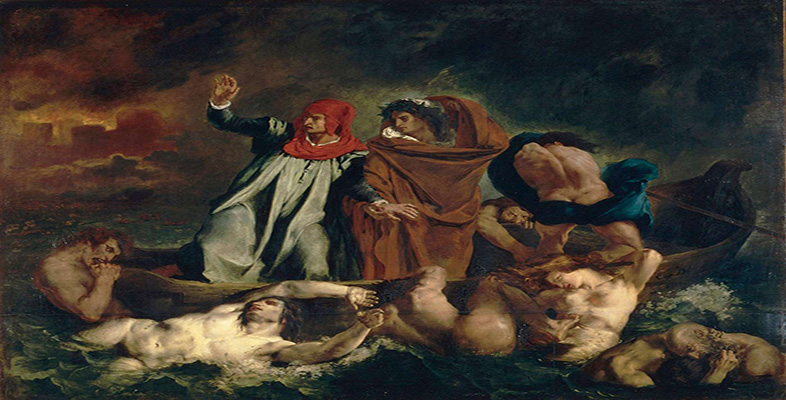3.2 The influence of Géricault and Gros
It was at the École des Beaux-Arts that Delacroix met Théodore Géricault, whose Romantic canvases, such as The Raft of the Medusa (Plate 15), made an impact on him. Delacroix posed as one of the foreground figures in this work, which was somewhat controversial due to its heroic and realistic treatment of a contemporary news story of French naval troops and settlers, shipwrecked on their way to Senegal and signalling to another vessel for help. The painting’s departure from grand, literary and classical themes was regarded as a disturbing challenge to tradition, given its adoption of the scale and importance of history painting. The graphic, realistic portrayal of human suffering was an implicit challenge to classical idealisation. In order to draw the bodies of the figures, the artist had made studies from actual corpses and severed limbs. Nevertheless, Géricault’s essential inspiration remained the academic, classical nude (he had seen and admired work by Michelangelo). What he achieved was a radical reworking of classical norms. He massed together writhing figures into a composition, marked by dramatic diagonal lines, that threatens to topple the ‘stable’ classical pyramidal figure groups it contains (one surmounted by a signalling figure, the other by a mast). The final result, a muscular and energetic reinterpretation of a classical style, provided an example that was to be well taken by Delacroix.
Click to see Plate 15: Théodore Géricault, The Raft of the Medusa [Tip: hold Ctrl and click a link to open it in a new tab. (Hide tip)]
Géricault’s challenge to prevailing notions of the ‘classical’ or ‘classic’ was among many that influenced the early career of Delacroix. During the Napoleonic empire, Antoine-Jean Gros introduced a more flamboyant, colourist style that, in its treatment of scale and pictorial space, departed from neoclassical norms. Gros was later to regret what he saw as some of the misdirected energy of his youth, but Delacroix greatly admired him. He was able to view Gros’s large Napoleonic canvases after the older artist had praised a painting discussed in more detail below, Delacroix’s 1822 Salon entry, The Barque of Dante (Plate 16):
I idolized Gros’s talent, which still is for me at the time of this writing [that is, at the end of Delacroix’s life], and after everything that I have seen, one of the most remarkable in the history of painting. Pure chance led me to meeting Gros, who, learning that I was the painter of the picture in question, complimented me with such unbelievable warmth that for the rest of my life I have been immune to all flattery. He ended by telling me, after bringing out all its merits, that it was a polished Rubens. For him, who adored Rubens and who had been brought up in the severe school of David, it was the highest of praise. He asked me if he could do anything for me. I asked him forthwith to let me see his famous paintings of the Empire, which at that time were in the obscurity of his workshop, since they could not be openly exhibited because of the times [restoration France] and because of their subjects. He left me there for four hours, alone or with him, in the middle of his sketches, his preliminary works.
(Quoted in Jobert, 1998, pp.68–9)
Click to see Plate 16: Eugène Delacroix, The Barque of Dante
